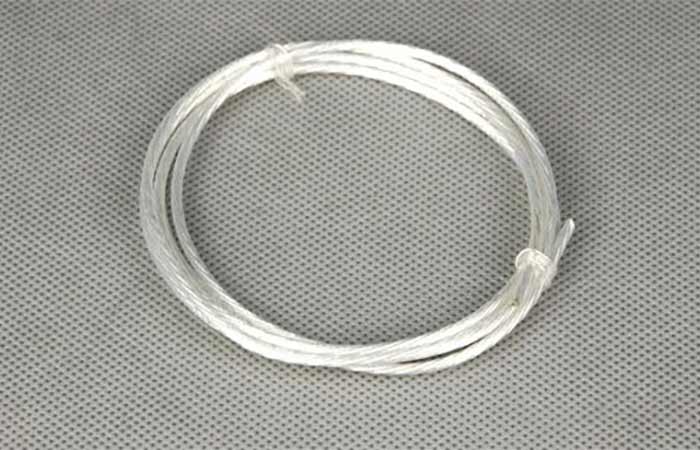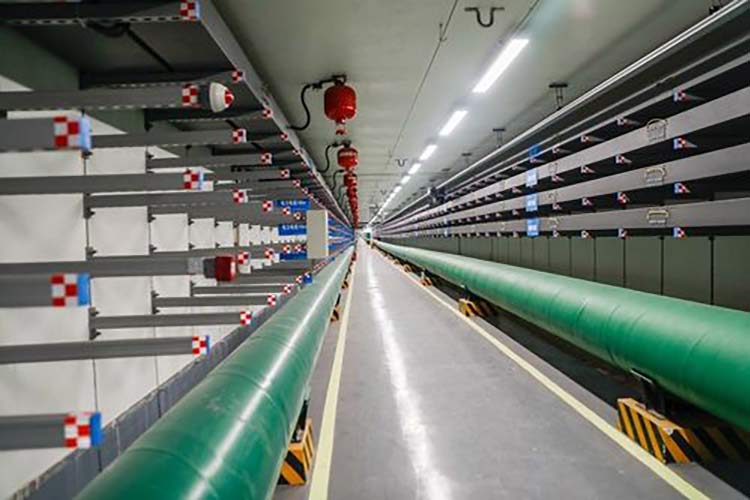Apakah Kabel Voltan Tinggi?
Penghantaran voltan ultra tinggi merujuk kepada penggunaan 500 aras voltan kV-1000 kV untuk menghantar elektrik.
Sekiranya 220 indeks penghantaran kV ialah 100%, pelaburan relatif bagi setiap kilometer penghantaran UHV, kos relatif bagi penghantaran elektrik kilowatt-jam seratus kilometer dan penggunaan bahan logam, dan lain-lain., telah dikurangkan dengan ketara, dan kadar penggunaan koridor laluan telah dipertingkatkan dengan ketara.
Dalam kehidupan seharian kita, kita sering dapat melihat projek penghantaran voltan ultra tinggi overhed, sama ada kita telah memikirkan soalan itu: kenapa tidak boleh seperti kabel bawah tanah bandar, talian kuasa voltan tinggi semuanya tertimbus di bawah tanah?

Kabel bawah tanah semasa biasanya mempunyai paras voltan yang lebih rendah.
Penghantaran talian dengan tahap voltan tinggi selalunya berada di atas kepala, yang terutamanya merupakan faktor kos dan teknologi.
Kabel bawah tanah adalah lebih kompleks daripada struktur talian atas, dengan keperluan teknikal yang tinggi, pembuatan, dan kesukaran pembinaan, ditambah dengan kabel yang tertanam di bawah tanah, bukan senang nak cari kesalahan, baik pulih, dan penyelenggaraan juga lebih sukar.
Dan dari segi kos, secara amnya, paras voltan yang sama bagi kos kabel bawah tanah 3 kepada 5 kali lebih tinggi daripada talian atas.
Ciri-ciri Talian Penghantaran Voltan Tinggi
khususnya, talian paras voltan tinggi biasa kami biasanya digunakan untuk penghantaran jarak jauh.
Jika kabel bawah tanah digunakan, terutamanya untuk penghantaran jarak jauh secara kerap melalui rupa bumi yang kompleks, kos dan keperluan teknikal malah boleh meroket.
Sebaliknya, juga kabel bawah tanah itu sendiri adalah secara semula jadi “keras”.
Talian atas di udara dalam keadaan terma yang baik, manakala udara di sekeliling kabel bawah tanah tidak mengalir, sukar untuk menghilangkan haba, yang sebahagian besarnya mengehadkan tahap kuasa yang boleh dihantar oleh kabel bawah tanah.
Yang penting ialah penghantaran voltan ultra tinggi belum dapat mencari bahan penebat yang berkesan untuk melakukan kulit luar lapisan penebat wayar.
Oleh itu, wayar voltan ultra tinggi terdedah dan tidak boleh ditanam beli di bawah tanah.
Terdapat kapasitans teragih di sekeliling wayar, melalui mana arus boleh bocor keluar.
Di satu pihak untuk meningkatkan penggunaan, sebaliknya, jika ada haiwan yang ditutup, terdapat juga risiko terkena renjatan elektrik.
Udara adalah penebat, tetapi bumi adalah konduktor. Dalam talian atas, ia cukup untuk meletakkan wayar terus di sana.
Tetapi di bawah tanah, tambahkan lapisan kulit penebat di luar wayar, sebaliknya, elektrik dalam wayar tidak pergi jauh, dan kebocoran elektrik akan bocor semua yang tinggal.
Kabel bawah tanah adalah lebih kompleks daripada struktur talian atas, dengan keperluan teknikal yang tinggi, pembuatan, dan kesukaran pembinaan, ditambah dengan kabel yang tertanam di bawah tanah, bukan senang nak cari kesalahan, baik pulih, dan penyelenggaraan juga lebih sukar.
Secara umumnya, kos kabel bawah tanah pada paras voltan yang sama akan menjadi beberapa kali atau bahkan berpuluh kali ganda daripada talian voltan tinggi udara.
Kabel voltan ultra tinggi yang ditanam di bawah tanah mempunyai masalah keselamatan dan ekonomi.
Jika berlaku kesalahan, pemeriksaan dan pembaikan kabelnya adalah projek yang sangat besar dan tidak mampu untuk melambung dan berpusing.
Oleh itu, kabel UHV semasa harus digantung tinggi di udara.
Ringkasan
Konduktor kabel bawah tanah sumber luar penebat dan pembuatan lapisan pelindung adalah sangat ketat, sentuhan biasa badan manusia dengan kulit luar kabel tidak akan mempunyai sebarang bahaya.
Pemasangan kabel juga sangat berhati-hati, kabel kebanyakannya tertanam di dalam parit kabel khas, paip baris kabel, atau terowong kabel, tertakluk kepada pengasingan dan perlindungan keselamatan yang baik.
Kedalaman kebanyakannya kurang daripada setengah meter, dan semakin tinggi tahap voltan, semakin dalam kabel itu tertimbus.
Lebih-lebih lagi, akan ada kabel berfungsi dengan baik atau pancang penanda kabel sebagai penanda setiap beberapa dozen meter di atas tanah tempat kabel itu ditanam untuk mengingatkan orang ramai tentang keselamatan.
Oleh itu, kabel bawah tanah terutamanya tidak mendatangkan bahaya kepada penduduk.



